There is no other transportation in the Philippines as ubiquitous as the Philippine jeepney. A hybrid of the American jeep, the Philippine jeepney came around the 1950′s to fill in the need for mass transport. From the basic grayish silver color to fully “pimped out” complete with stereo blaring and disco lights inside, the jeepney is a sight to see! The jeepney by far, is the most useful, and most affordable means of mass transport found all over the country. So with the help of local photojournalist Red Santos, we rent our own jeepney for the day and cruise the streets of Manila. Locals really get a kick out of a group of camera toting foreigners getting around “Filipino style”. This year’s jeepney was wonderfully “pimped out”, complete with an outrageous paint job and multiple silver trumpet horns!
Jeepneys can be flagged down much like taxis by holding out or waving an arm at the approaching vehicle. Because of the proximity of the passengers in jeepneys, a certain etiquette is followed. Jostling and shoving passengers is considered rude, the elderly and women are always seated, talking loudly and boisterous behavior is discouraged. Children are sometimes allowed to ride for free if they agree to sit on the lap of the accompanying adult and not take up seating space. If the jeepney is full, passengers (only males) will also sometimes cling outside or sit on the roof instead (referred to colloquially as sabit in Tagalog and kabit or kapyot in Cebuano; both meaning ‘to hang on with your fingertips’). This practice is dangerous and illegal. To ask the driver to stop the vehicle, passengers can rap their knuckles on the roof the jeepney, rap a coin on a metal handrail, or simply tell the driver to stop.
Today, we rode our Jeepney over to Manila’s largest flower market, and then from there to several different locations around town. we always take our Jeepney to Santa Mesa, one of my favorite parts of town, where there’s a community of people living under an overpass. It’s an area which was introduced to me by fellow photojournalist Red Santos, who I had the good fortune of meeting a few years back. The people living under the overpass are surviving in conditions that most of us would find unbearable, but there is a sense of optimism and friendliness among all that live there. We’re always welcomed into the community and usually spend quite a bit of time talking to, and photographing them. It’s a bit of a cultural exchange, that leaves an impression on my tour guests.
Exploring Manila in our own Jeepney is always one of the highlights of our photo tour!


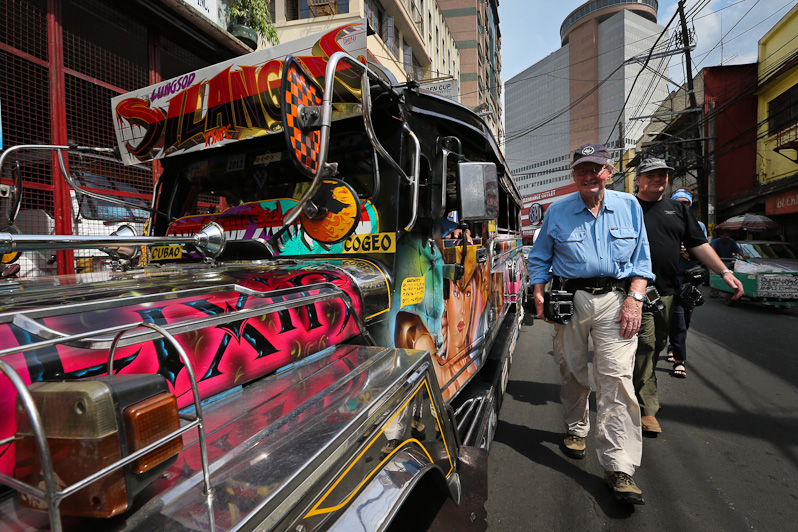

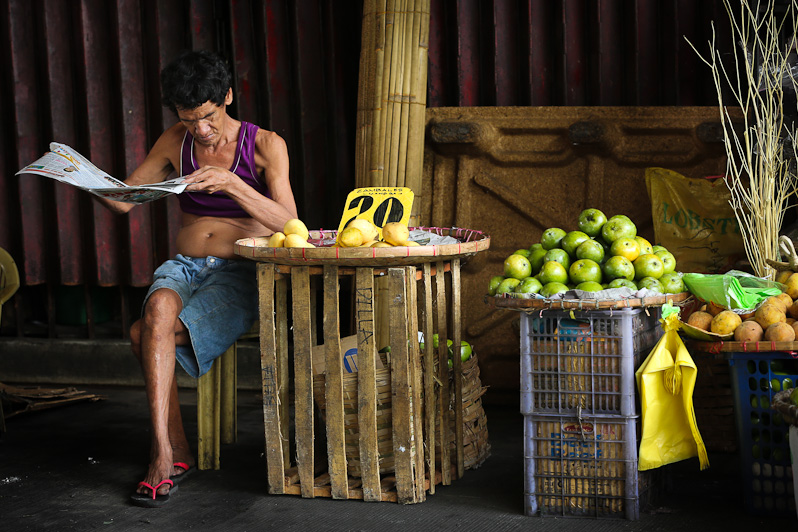
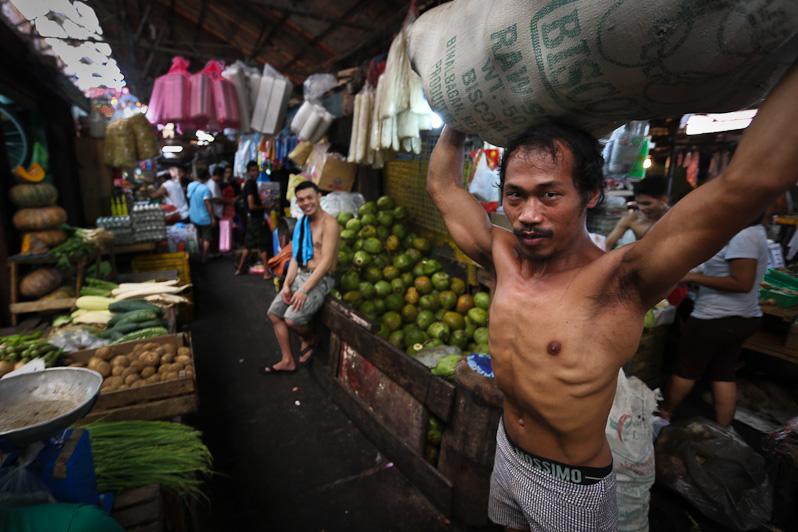

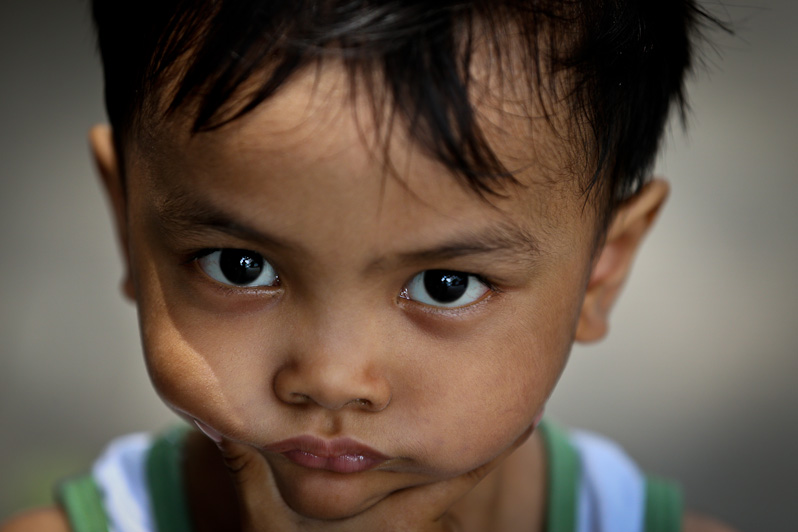

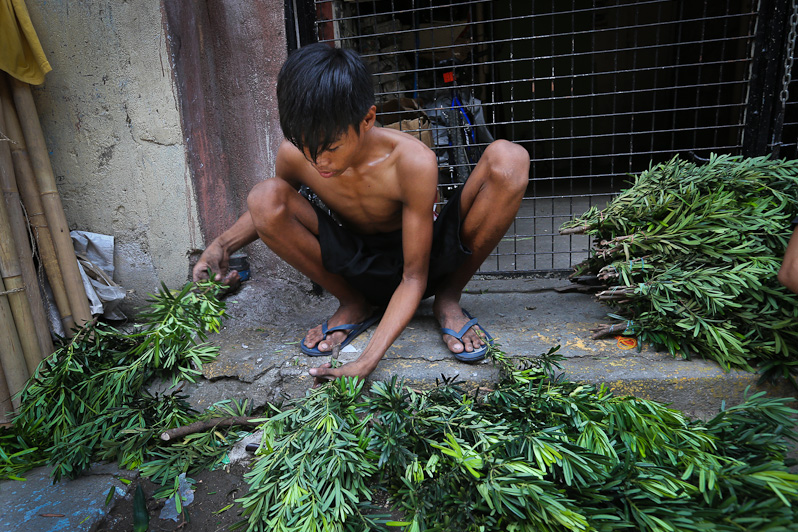
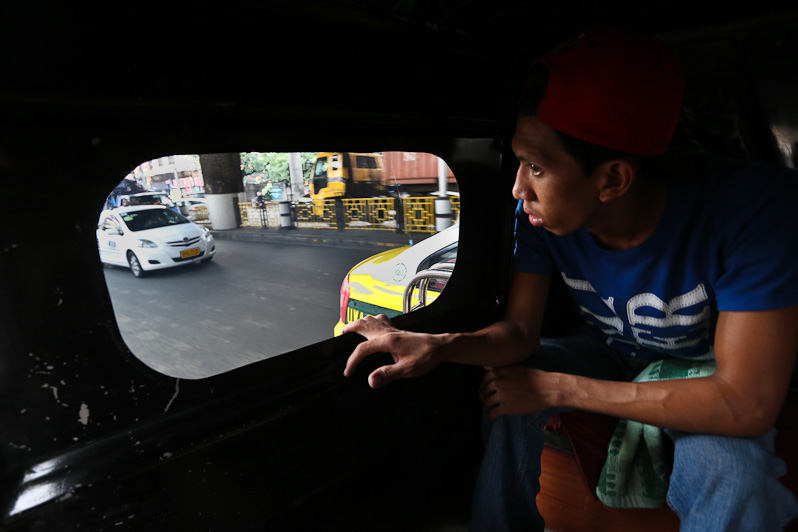
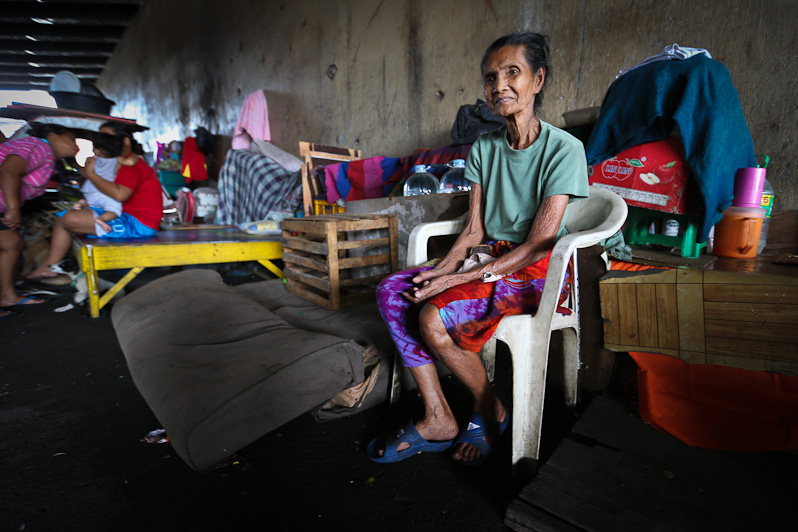

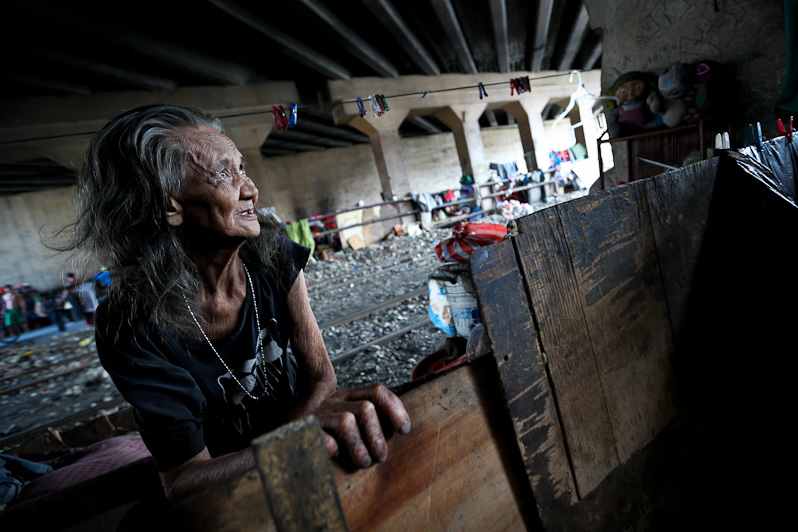
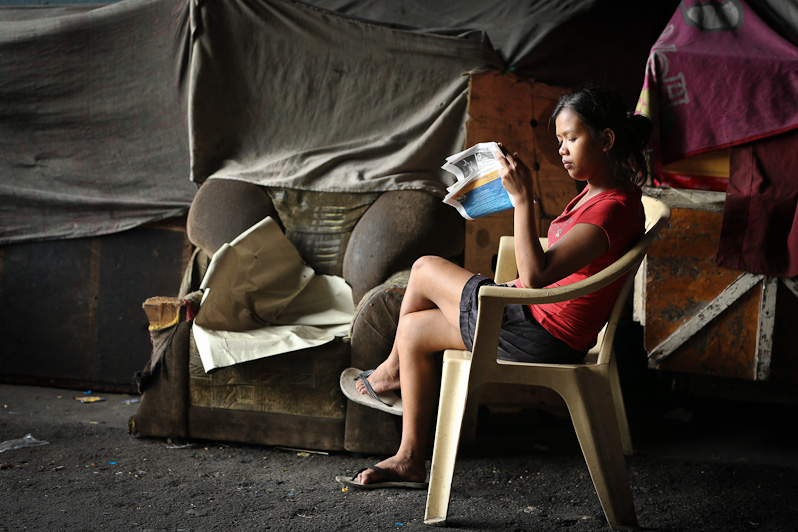

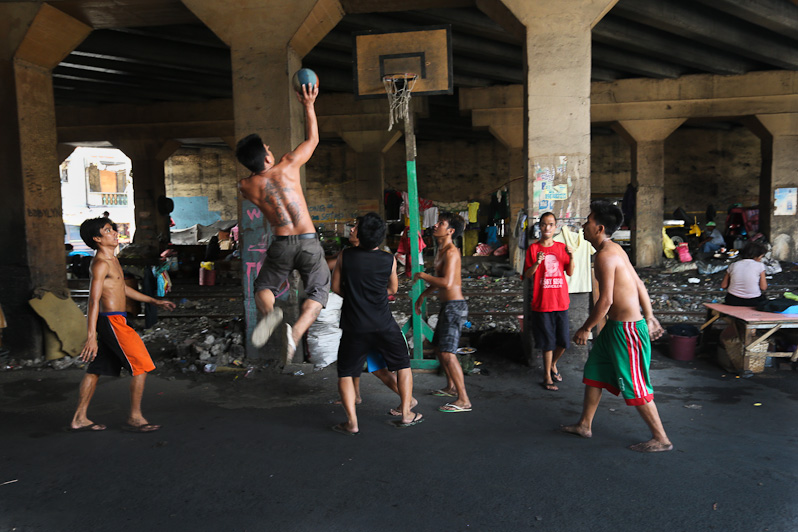

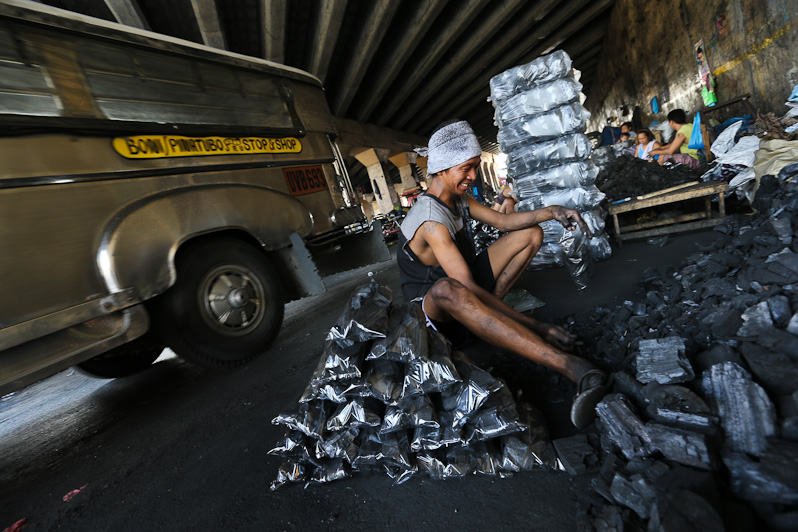

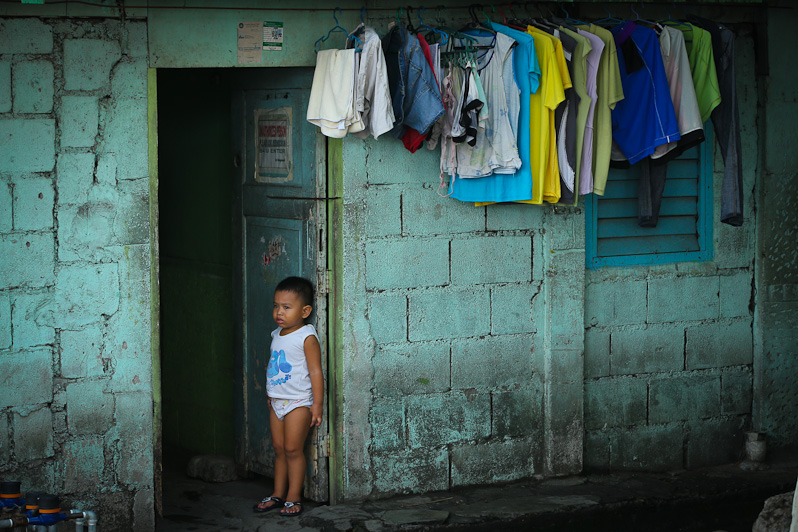
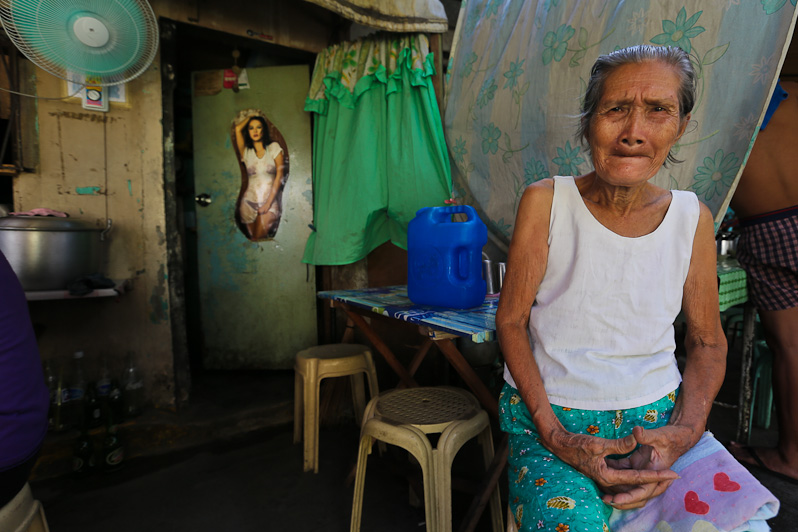

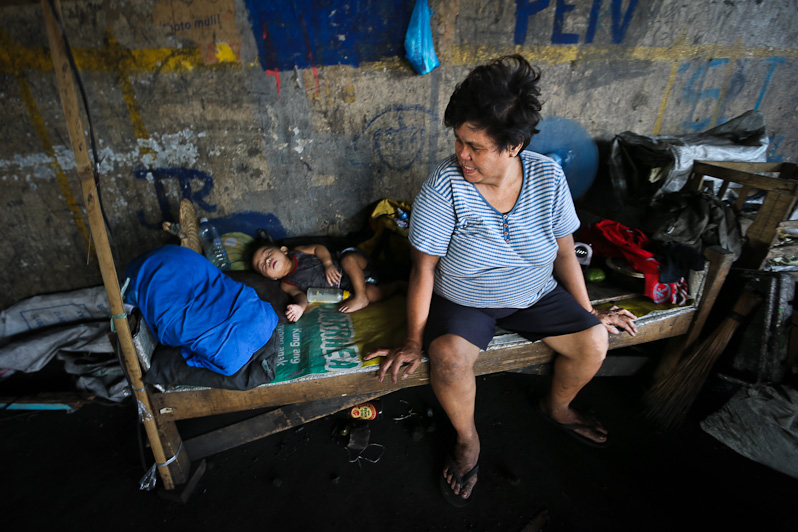
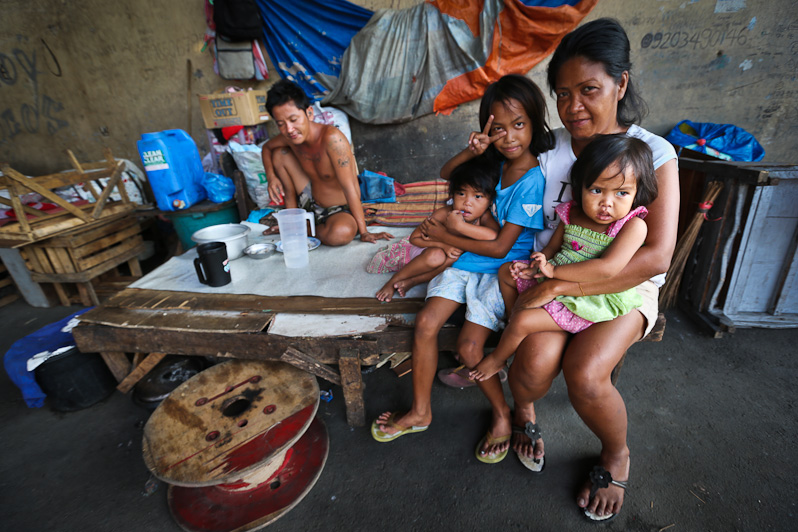








Nice to see that Virginia is still around in the “overpass” community.
Roberto
Karl, Great images as always.
Glad to see that the “overpass” community is still there. I was afraid that last year’s flood would have forced them to relocate. But I think Virginia looks a little older.
Many of the flowers in the market come from the Baguio-Benguet area but they’re often more expensive up there than after travelling the distance to Manila. Go figure.